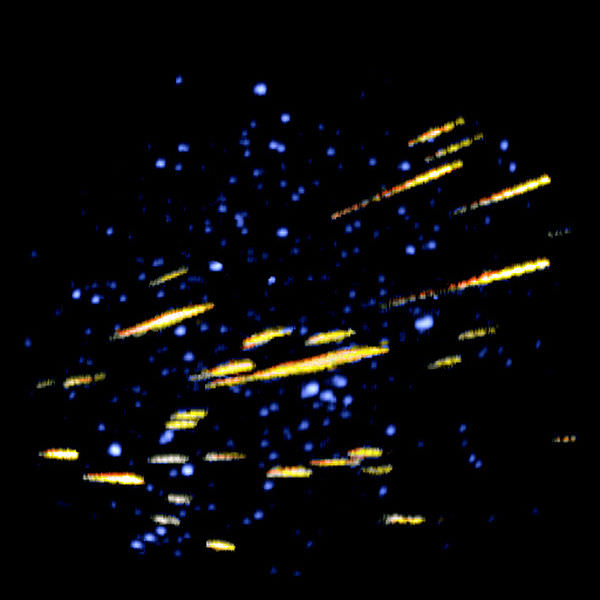

Meteor shower.
[/caption]
Falling stars aren’t stars at all, they’re actually tiny pieces of dust impacting the Earth’s atmosphere and burning up. You might also have heard them called “shooting stars”, but their scientific name is “meteors”. Let’s learn some more about falling stars.
Space looks empty, but there’s all kind of stuff out there: gas, dust and tiny rock and ice fragments. The tiny pieces of rock or ice are known as meteoroids. They could have been left over from the formation of the Solar System 4.6 billion years ago. Or maybe they were part of the tail of a comet that was making a near pass to the Sun. Rocks and asteroids can collide with one another in space and generate meteoroid debris. Who knows how long the tiny object was orbiting the Sun until its path finally crossed the Earth.
When a meteoroid strikes the Earth’s atmosphere, it burns up leaving a tiny trail in the sky. This trail is the falling star, or meteor. The size of the trail depends on the speed of the object, the angle it struck the atmosphere at, and the amount of mass that it has. The largest objects can leave a trail across the sky that lasts for a few seconds.
Although you can see falling stars any night of the year, there are certain times when they’re more frequent. These are the times when the Earth orbit takes us through the tail of an ancient comet. We’ll pass through the tail fragments at the same time every year, so a meteor shower is predictable. Some famous meteor showers are the Perseids in August, and the Leonids in November.
So remember, when you’re looking for falling stars, you’re not seeing stars at all, but meteors; tiny chunks of rock and ice impacting the Earth’s atmosphere and burning up.
We have written many articles about stars here on Universe Today. Here’s an article about the Geminid meteor shower, and here’s another about the Quadrantid Meteor Shower.
If you’d like more info on falling stars, check out NASA’s How to See the Best Meteor Showers, and here’s a link to NASA’s Solar System Exploration Guide on Meteors.
We have recorded several episodes of Astronomy Cast about stars. Here are two that you might find helpful: Episode 12: Where Do Baby Stars Come From, and Episode 13: Where Do Stars Go When they Die?
Reference:
NASA
NASA continues to progress with the development of the Nancy Grace Roman Space Telescope (RST),…
Our neighbour, the Large Magellanic Cloud (LMC), is rich in gas and dust and hosts…
New research on locomotion techniques that could be used in space exploration is constantly coming…
White dwarfs are the remnants of once brilliant main sequence stars like our Sun. They're…
We all know that asteroids are out there, that some of them come dangerously close…
It’s a familiar sight to see astronauts on board ISS on exercise equipment to minimise…